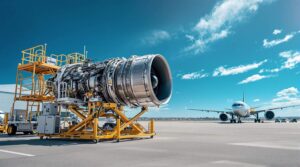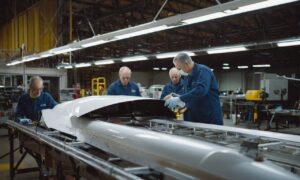During World War II, the devastating atomic bombing of Nagasaki remains a poignant part of history. Understanding the specific aircraft involved in this tragic event involves delving into pivotal historical records and examining the circumstances that led to this cataclysmic moment.
The B-29 Superfortress: Enola Gay and Bockscar
The bombing of Nagasaki was executed by a B-29 Superfortress, a long-range bomber aircraft used by the United States during the war. Two planes were specifically involved: the Enola Gay and Bockscar.
The Enola Gay, piloted by Colonel Paul Tibbets, dropped the first atomic bomb, code-named “Little Boy,” on Hiroshima on August 6, 1945. Three days later, on August 9, 1945, Bockscar, commanded by Major Charles Sweeney, released the second atomic bomb, “Fat Man,” over Nagasaki.
Bockscar’s Mission
Bockscar, originally intended to target the city of Kokura, faced unfavorable weather conditions and had to redirect its mission to its secondary target, Nagasaki. Despite challenges, the crew managed to deliver the devastating blow that contributed to Japan’s eventual surrender and the end of World War II.
Historical Impact and Controversies
The dropping of atomic bombs on Hiroshima and Nagasaki remains a subject of immense historical significance and ethical debate. While it accelerated the end of the war, it also resulted in catastrophic loss of life and long-term health implications for survivors.
The decision to use nuclear weapons and the subsequent impact on civilian populations sparked ongoing discussions about the morality and necessity of such actions during wartime.
Legacy and Reflection
The events at Nagasaki and Hiroshima continue to serve as a powerful reminder of the devastating consequences of war and the imperative of pursuing peace and diplomacy to prevent future tragedies of such magnitude.
Understanding the planes involved in these historic events offers insight into the technological advancements and the harrowing realities of warfare during that period.
Technical Specifications of B-29 Superfortress
The B-29 Superfortress, a revolutionary aircraft for its time, boasted impressive technical specifications that contributed to its effectiveness in World War II. Here are some key details:
| Attribute | Details |
|---|---|
| Range | Approximately 3,250 miles without refueling |
| Maximum Speed | 358 mph (576 km/h) |
| Weight | Approximately 74,500 pounds (empty) |
| Armament | Capable of carrying up to 20,000 pounds of bombs |
Innovative Design and Impact
The technological advancements incorporated into the B-29 Superfortress not only altered the course of warfare during World War II but also influenced subsequent aircraft designs. Its long-range capabilities and payload capacity redefined strategic bombing and aerial warfare tactics.
Frequently Asked Questions
- What was the payload capacity of the B-29 Superfortress?
- Who were the notable pilots associated with the Enola Gay and Bockscar?
- How did the B-29 Superfortress contribute to the conclusion of World War II?






